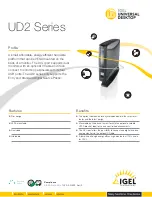
v
Never ship a cartridge in a commercial shipping envelope. Always place it in a
box or package.
v
If you ship the cartridge in a cardboard box or a box of a sturdy material, ensure
the following:
– Place the cartridge in polyethylene plastic wrap or bags to protect it from
dust, moisture, and other contaminants.
– Pack the cartridge snugly; do not allow it to move around.
– Double-box the cartridge (place it inside a box, then place that box inside the
shipping box) and add padding between the two boxes.
Provide Proper Acclimation and Environmental Conditions
v
Before you use a cartridge, let it acclimate to the normal operating environment
for 1 hour. If you see condensation on the cartridge, wait an additional hour.
v
Ensure that all surfaces of a cartridge are dry before inserting it.
v
Do not expose the cartridge to moisture or direct sunlight.
v
Do not expose recorded or blank cartridges to stray magnetic fields of greater
than 100 oersteds (for example, terminals, motors, video equipment, X-ray
equipment, or fields that exist near high-current cables or power supplies). Such
exposure can cause the loss of recorded data or make the blank cartridge
unusable.
v
Maintain the following environmental conditions outlined in Table 3-2.
Table 3-2. Environmental Specifications
Environmental
Factor
Operating
Operational
Storage
1
Archival
Storage
2
Shipping
Temperature
10° to 45°C
(50° to 113°F)
16° to 35°C
(61° to 95°F)
16° to 25°C
(61° to 77°F)
-23° to 49°C
(-9° to 120°F)
Relative
humidity
(noncondensing)
10% to 80%
20% to 80%
20% to 50%
5% to 80%
Wet bulb
temperature
26°C (79°F)
26°C (79°F)
26°C (79°F)
26°C (79°F)
1
Operational storage equals less than 1 year.
2
Archival storage equals 1 to 10 years.
Perform a Thorough Inspection
v
Inspect the cartridge's packaging to determine potential rough handling.
v
When inspecting a cartridge, open only the cartridge door. Do not open any
other part of the cartridge case. The upper and lower parts of the case are held
together with screws; separating them destroys the usefulness of the cartridge.
v
Inspect the cartridge for damage before using or storing it.
v
Inspect the rear of the cartridge (the part that you load first into the tape load
compartment) and ensure that there are no gaps in the seam of the cartridge
case. If there are gaps in the seam, the leader pin may be dislodged.
v
Check that the leader pin is properly seated.
v
If you suspect that the cartridge has been mishandled but it appears useable,
copy any data onto a good cartridge immediately for possible data recovery.
Discard the mishandled cartridge.
v
Review handling and shipping procedures.
3-6
Dell PowerVault LTO Tape Drive User's Guide
Summary of Contents for PowerVault LTO5-140
Page 1: ...Dell PowerVault LTO Tape User s Guide User s Guide ...
Page 4: ...iv Dell PowerVault LTO Tape Drive User s Guide ...
Page 6: ...vi Dell PowerVault LTO Tape Drive User s Guide ...
Page 8: ...viii Dell PowerVault LTO Tape Drive User s Guide ...
Page 16: ...1 8 Dell PowerVault LTO Tape Drive User s Guide ...
Page 26: ...2 10 Dell PowerVault LTO Tape Drive User s Guide ...
Page 34: ...3 8 Dell PowerVault LTO Tape Drive User s Guide ...
Page 36: ...4 2 Dell PowerVault LTO Tape Drive User s Guide ...
Page 80: ...8 16 Dell PowerVault LTO Tape Drive User s Guide ...
Page 82: ...A 2 Dell PowerVault LTO Tape Drive User s Guide ...















































